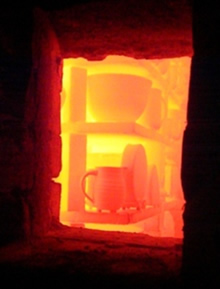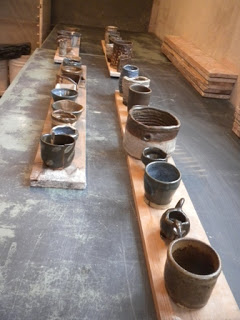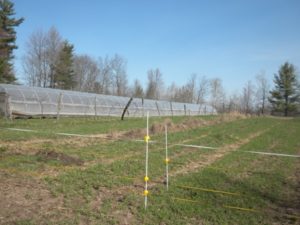
Rye early spring
Ken works to keep soil covered. He often says, “Naked soil is dying soil.” He means that either mulch or green manures will maintain moderate soil temperatures to promote microbial life, prevent erosion, add nutrients, – so many things! Ken often mulches. He also likes to plant green manures.
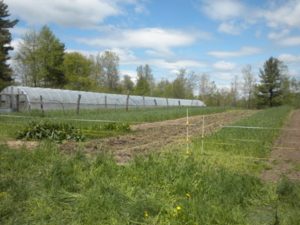
Rye a few weeks ago
What are green manures? It is a crop intended to promote soil health rather than a crop to be harvested. Green manures are often legumes like peas or clover, or sometimes they are grains like wheat, rye, buckwheat, or oats. Sometimes different seeds are combined like peas and oats. Some green manures like rye have extensive root structures and can break up hard soil. Legumes like peas or clover add nitrogen to the soil. All add root mass, sometimes called white manure.
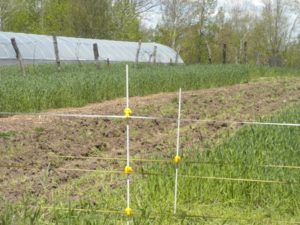
Rye tall enough to mow
This white manure adds organic matter to the soil. Organic matter promotes life in the soil. It also acts like a porous sponge – it will retain soil moisture during drought and will soak up heavy rain to avoid saturated soil.
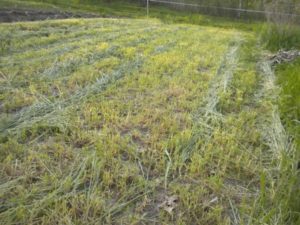 Ken loves to plant rye in the fall so the soil is covered over winter. He then mows or turns it up as he needs to plant. Here is some mowed rye so it did not make seed, but will continue to grow and add to the soil.
Ken loves to plant rye in the fall so the soil is covered over winter. He then mows or turns it up as he needs to plant. Here is some mowed rye so it did not make seed, but will continue to grow and add to the soil.



